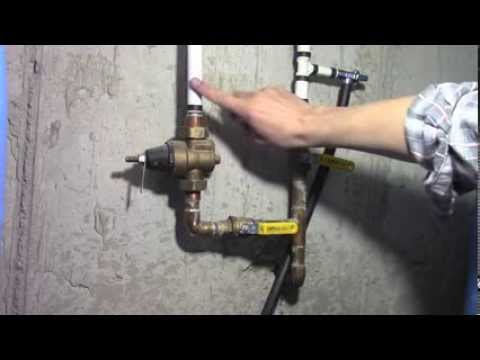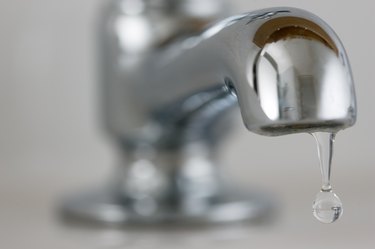Your Guide to Dealing with Low Water Pressure in Your Home
Your Guide to Dealing with Low Water Pressure in Your Home
Blog Article
Just how do you actually feel on the subject of 4 Ways to Troubleshoot Low Water Pressure?

Low tide stress in your house can be a frustrating problem, impacting whatever from showering to cleaning recipes. If you're experiencing weak water circulation, there are numerous feasible reasons and remedies to discover. In this overview, we'll discuss common reasons for low tide stress and sensible actions to attend to the concern effectively.
Intro to Low Tide Stress
Low water pressure occurs when the flow of water from your taps, showers, and other components is weak than usual. This can make daily jobs extra challenging and less efficient. Understanding the root causes of low tide stress is crucial to discovering the ideal remedy.
Usual Root Causes Of Low Tide Stress
Pipeline Obstructions
Over time, pipes can end up being blocked with natural resource, debris, or debris, restricting the flow of water. This is a typical problem in older homes with galvanized steel pipes.
Rust
Rust within pipes can result in leakages and minimized water pressure. Corrosion build-up can constrict water flow, especially in maturing plumbing systems.
Faulty Stress Regulators
Stress regulatory authorities are in charge of preserving constant water pressure in your house. If they malfunction, it can lead to low tide stress or unequal circulation throughout the house.
Metropolitan Water Supply Issues
Occasionally, the issue lies outside your home. Metropolitan water supply problems, such as main line leakages or upkeep work, can momentarily decrease water stress in your area.
Exactly How to Detect Low Water Pressure
Examining Faucets and Fixtures
Begin by examining the water pressure at various faucets and fixtures throughout your home. If the issue is isolated to details areas, it might show local troubles.
Checking Pipelines
Evaluate visible pipelines for indications of leakages, corrosion, or obstructions. Pay attention to any uncommon audios, such as knocking or rattling pipes, which can indicate concerns within the plumbing system.
Consulting with a Plumber
If you're incapable to identify the source of low tide stress, consider employing an expert plumber to perform a complete evaluation. They can determine underlying concerns and recommend proper remedies.
Do It Yourself Solutions to Fix Low Water Pressure
Cleaning Aerators and Showerheads
Mineral deposits can collect in aerators and showerheads, reducing water flow. Remove and cleanse these elements consistently to improve water pressure.
Flushing Hot Water Heater
Debris build-up in the water heater can restrict flow and reduce efficiency. Flushing the tank periodically helps eliminate sediment and maintain optimal performance.
Checking Stress Regulatory Authority
Ensure that the pressure regulator is operating appropriately. Adjusting or changing the regulator can help restore appropriate water stress throughout your home.
Clearing Clogs in Water Lines
For minor clogs, attempt making use of a plumbing snake or chemical drainpipe cleaner to clear obstructions in pipelines. Be cautious when making use of chemicals and adhere to security guidelines.
When to Call a Specialist Plumber
If do it yourself efforts fall short to solve the problem or if you suspect substantial plumbing issues, it's best to seek aid from a qualified plumber. They have the proficiency and devices to attend to complex concerns securely and successfully.
Safety Nets to Maintain Water Stress
Regular Upkeep
Schedule regular maintenance for your plumbing system to stop concerns such as deterioration, leakages, and blockages. Addressing small problems early can aid stay clear of even more substantial fixings later.
Installing a Pressure Booster
Take into consideration installing a pressure booster pump to enhance water stress in areas with continually low circulation. This can be particularly beneficial for multi-story homes or properties with high-demand fixtures.
Monitoring Water Usage
Be mindful of water use practices and stay clear of ill-using the plumbing system. Straightforward adjustments, such as incredible showers and washing tons, can help maintain appropriate water pressure.
Verdict
Taking care of low water stress can be frustrating, yet recognizing the underlying causes and executing ideal remedies can recover ideal flow throughout your home. Whether it's cleaning up aerators, checking pipes, or consulting with a plumber, taking proactive steps can make sure a constant supply of water for your daily needs.
FOUR WAYS TO FIX LOW WATER PRESSURE NOW
Turning on a shower or faucet only to find the water comes out in a sad, slow drizzle is never a good feeling. How exactly are you supposed to wash a pan or take a quick shower when it takes 10 minutes just to rinse off a little soap? The good news is that when your water pressure is bad, there's always a cause: typically one that can be easily fixed. Here are some of the most common causes of low pressure and what you can do to fix the issue:
DEBRIS AND MINERAL DEPOSIT BUILDUPS
If you notice low water pressure from just one or two of the fixtures in your house, the problem likely has to do with debris buildup. Water is full of minerals and other debris, all of which can accumulate in your pipes and on your fixtures. This can cause a blockage that affects how much water flows through. To fix this, try filling a small plastic bag with white vinegar, and use a rubber band to hang it around your showerhead or faucet. Let the head of the fixture soak for a few hours, and the vinegar should loosen the deposits.
WATER LEAKS
Leaks are another common cause of low water pressure. If water is flowing out of your plumbing through a hole or crack before it can reach your fixture, the pressure coming out of the faucet or showerhead will be lower. A plumbing professional is your best bet for finding and repairing a leak in your water supply pipes.
Leaks are another common cause of low water pressure. If water is flowing out of your plumbing through a hole or crack before it can reach your fixture, the pressure coming out of the faucet or showerhead will be lower. A plumbing professional is your best bet for finding and repairing a leak in your water supply pipes.
FOUR WAYS TO FIX LOW WATER PRESSURE NOW
Turning on a shower or faucet only to find the water comes out in a sad, slow drizzle is never a good feeling. How exactly are you supposed to wash a pan or take a quick shower when it takes 10 minutes just to rinse off a little soap? The good news is that when your water pressure is bad, there's always a cause: typically one that can be easily fixed. Here are some of the most common causes of low pressure and what you can do to fix the issue:
DEBRIS AND MINERAL DEPOSIT BUILDUPS
If you notice low water pressure from just one or two of the fixtures in your house, the problem likely has to do with debris buildup. Water is full of minerals and other debris, all of which can accumulate in your pipes and on your fixtures. This can cause a blockage that affects how much water flows through. To fix this, try filling a small plastic bag with white vinegar, and use a rubber band to hang it around your showerhead or faucet. Let the head of the fixture soak for a few hours, and the vinegar should loosen the deposits.
WATER LEAKS
Leaks are another common cause of low water pressure. If water is flowing out of your plumbing through a hole or crack before it can reach your fixture, the pressure coming out of the faucet or showerhead will be lower. A plumbing professional is your best bet for finding and repairing a leak in your water supply pipes.
Leaks are another common cause of low water pressure. If water is flowing out of your plumbing through a hole or crack before it can reach your fixture, the pressure coming out of the faucet or showerhead will be lower. A plumbing professional is your best bet for finding and repairing a leak in your water supply pipes.
A VALVE ISSUE
If you have low water pressure throughout your home, check your main shut-off valve to make sure it's completely open. You may also want to see if there's a pressure-reducing valve installed. If there is, have a plumber help you adjust the settings to get the pressure you're looking for.
OTHERS USING WATER
Believe it or not, your low water pressure could be caused by your neighbors. If you notice low pressure at certain times of day, it may be because you and the people living next to you have similar schedules - when everyone is showering at the same time, the pressure will be lower in every home. Low pressure throughout the neighborhood may also be caused by an issue with your municipal water supply. If that's the case, call the supplier to see if they're working on the issue.
https://www.rotorooter.com/blog/water-leaking/low-water-pressure-fixes/

I am very inquisitive about 9 Reasons for Low Water Pressure in Your House and I'm hoping you enjoyed reading our blog posting. Enjoyed reading our entry? Please share it. Help others locate it. Many thanks for being here. Return soon.
About Report this page